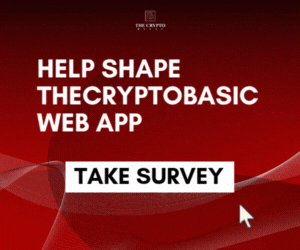The crypto industry stands out for its successful implementation of gamification strategies, leveraging its unique appeal to capture, sustain, engage and grow communities around their projects.
Gamification is the term used to describe projects that integrate game-like elements, such as daily quests and challenges, loyalty programs, reward points, social connections and more. By doing this, projects can tap into their user’s innate desires to stimulate curiosity, create a sense of purpose and progression, and boost overall engagement.
Crucial to gamification is the concept of rewards, which act as a tangible incentive for users to interact with a project, dApp or service. The best incentives are usually financial, and in the crypto space this means giving away tokens, crypto, NFTs, access to free content and more. By dishing out regular rewards, projects offer a strong incentive to keep up their user’s level of commitment.
Education, Social Connection & Customer Retention
One specific area where gamification can help is in educating the community, rewarding users for acquiring knowledge. For instance, projects can ask their user base to complete meaningful missions that expand their understanding of how the platform works. Users are rewarded not only with a financial incentive, but also the practical skills they pick up along the way. By offering users the chance to win tokens for completing certain tasks, projects can foster a sense of “continuous learning” where users constantly expand their knowledge of how the platform works.
The project benefits in other ways, too. Suppose it implements a community leaderboard, with ranking points and badges. This will enable it to track and showcase the growth of its community, highlight individual user’s expertise, and also foster a sense of competition. Gamification taps into people’s natural desire to achieve status and fame, as well as their urge for financial rewards.
Gamification can boost social activity in the community by fostering conversation between users. The introduction of challenges, quests and other games can facilitate discussion in forums and on platforms such as Twitter, Discord and Telegram. As projects give their users more tasks to fulfill, they can expand on this with the creation of team games, stimulating users to cooperate, discuss strategy, and share ideas. In turn, this helps to create a livelier and healthier community where people feel a sense of belonging.
Another key advantage of gamification is it can prevent users from losing interest in a project. By enticing the community with fun, new tasks and challenges, users will feel compelled to return to the platform to explore the latest things it has to offer. An element of unpredictability does wonders in terms of user retention, so projects need to keep it fresh by introducing more original challenges and games, and unexpected rewards.
Successful Examples Of Crypto Gamification
One of the most compelling aspects of gamification is it can be applied to almost any kind of project, not just Web3 games. Crypto ecosystems are ideally suited for gamification, as they involve ownership of decentralized assets with tangible value. Also, the rewards can increase with time. As the popularity of the project expands, its native assets often become more valuable, leading to greater incentives for users to keep learning and engaging.
1. Yellow Duckies
Yellow Duckies is an NFT game built atop of the Yellow Network, designed to act as a testing ground for the Layer-3 platform and educate and grow its nascent community. The popularity of the project led to it being established as Yellow’s official Canary Network
With Duckies, community members are incentivized to test and experiment with Yellow Network’s platform in a live setting ahead of its mainnet launch.
Yellow Network is a Web3 platform that uses state channel technology to facilitate cross-chain trading without requiring users to bridge their assets. It’s based on OpenDAX v4, which enables the pooling of liquidity across multiple exchanges and networks, and facilitates rapid, low-cost trading.
However, Yellow Network’s technology is what might be described as “bleeding edge”, so there’s a need to proceed with caution. Enter Yellow Duckies, which provides an environment that incentivizes users to battle-test the network. By targeting a limited number of users, Yellow Duckies enables developers to test innovations around smart contracts and software components ahead of its mainnet launch.
As a gamified, NFT trading card game, Yellow Duckies is ideally suited for this, encouraging users to collect duckling cards with unique characteristics, traits, abilities and artwork. The game involves buying and selling NFTs, testing Yellow’s transaction capabilities and smart contracts. Users are incentivized with the ability to combine Duckies NFTs to create rarer and occasionally, even mutated Duckies that can be much more valuable. So it offers rewards and surprises that keep users engaged. At the same time, Yellow Duckies fosters a strong sense of community, with Ambassador roles and community calls facilitating discussion and education. It also helps to test Yellow’s governance mechanisms, as the $DUCKIES token gives holders the right to vote on proposals.
2. Magic Eden
Magic Eden has emerged as one of the industry’s most popular NFT marketplaces and it’s all thanks to its gamification strategy, which revolves around the idea of daily quests.
Through its daily quests, users are encouraged to undertake various challenges and claim crypto and NFT-based rewards for completing them successfully. Magic Eden’s diamond rewards serve as a currency that is used to unlock various perks and enhancements for users, and therefore acts as a strong incentive for them to participate in the daily quests.
The clever thing about Magic Eden’s rewards system is that everyone can take advantage of it, whether they’re a veteran NFT collector or just starting out in the space. It infuses a sense of achievement that motivates users to continue exploring the platform.
3. Layer3
Layer3 is a dedicated Web3 browser that stands out for its captivating user journeys. One of the key elements of its gamification strategy is its interactive user interface, which has been carefully designed to encourage engagement. Layer3 also incorporates reward badges which can be had by completing special quests that act as a gateway to the numerous experiences Web3 has to offer.
For instance, there are quests designed to get people started in DeFi, blockchain games, Web3 social networks and Layer-2 scaling networks. To complete each quest, users are required to explore a different area of the Web3 ecosystem, expanding their knowledge of how the decentralized internet works and the kinds of services it offers.
Layer3 rewards users with both cryptocurrency tokens and NFT drops, strongly incentivizing them to keep learning.
An Essential Growth Strategy
The above examples showcase how gamification can be an extremely powerful strategy for crypto projects to educate their users, boost engagement and motivate people to keep on coming back for more.
Gamification takes advantage of basic human psychology: By tapping into our desires to earn rewards, have fun and achieve greater recognition, crypto projects can encourage people to continuously explore and learn about what they have to offer. Ultimately, the idea with gamification is to foster a strong sense of loyalty and excitement and build a foundation for longer term success.
DisClamier: This content is informational and should not be considered financial advice. The views expressed in this article may include the author's personal opinions and do not reflect The Crypto Basic opinion. Readers are encouraged to do thorough research before making any investment decisions. The Crypto Basic is not responsible for any financial losses.



